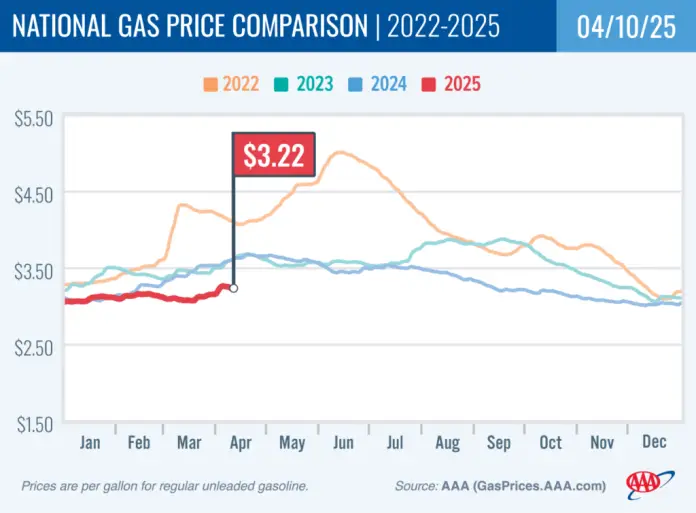Gas prices at the pump are defying seasonal expectations, providing a brief respite for small business owners across the country. With many anticipating price hikes typical for this time of year, the unexpected dip in gasoline prices is attributed to a combination of increased oil production by OPEC+ and decreased demand for gasoline. This shift not only affects consumers’ wallets but also has implications for small businesses that depend heavily on transportation.
According to data from the Energy Information Administration (EIA), the national average price for gasoline has settled at $3.22 per gallon, a decline from $3.08 just a month ago and significantly lower than $3.61 a year prior. This timely reduction can be advantageous for small businesses, particularly those with delivery services or extended travel needs.
Key Takeaways
- Current Gas Prices: As of now, gas averages $3.22 nationally, compared to $3.08 a month ago and $3.61 last year.
- Factors Influencing Price Drops: An increase in oil production from OPEC+, alongside a decrease in gasoline demand from 8.49 million barrels per day to 8.42 million barrels, is driving prices lower.
- Regional Variations: The most expensive gas prices are found in California ($4.92) and Hawaii ($4.52), while the cheapest can be found in states like Mississippi ($2.73) and Tennessee ($2.75).
Small business owners typically operate within tighter budget constraints than larger corporations. Recent drops in fuel prices can directly translate to lower operational costs, enabling increased profitability or even the potential for reinvestment into their business. Improved cash flow could allow for hiring additional staff, expanding service areas, or enhancing product offerings.
In practical terms, small businesses engaged in logistics or delivery can benefit significantly from reduced fuel costs. For instance, a retail delivery service might see a marked decrease in expenses associated with transportation, allowing them to offer more competitive pricing or to allocate funds to other areas, such as marketing or inventory. Furthermore, businesses that maintain a fleet may find it beneficial to revisit and potentially renegotiate fuel allowances or expense policies in light of the current pricing shift.
Industry Commentators Weigh In
“Lower gas prices offer a much-needed boost to small businesses that are already navigating a complex economic landscape,” commented an EIA representative. “While the reductions may be temporary, they can offer substantial relief for vulnerable sectors.”
Potential Challenges Ahead
While current trends are encouraging, small business owners should remain vigilant. Factors such as geopolitical tensions, hurricanes, and other disruptions can dramatically alter oil prices. Furthermore, despite the current reduction in fuel prices, small businesses must also contend with rising operational costs in other areas.
In addition, while gas prices are low, electric vehicle (EV) charging costs have remained stable at 34 cents per kilowatt hour. Companies considering a transition to EVs should be aware that regional disparities exist in charging costs. For example, businesses operating in states like Hawaii face higher electricity prices compared to those in Kansas, where costs are as low as 22 cents per kilowatt hour.
As cleanup from COVID-19 continues, small businesses are also facing supply chain disruptions that can obfuscate gains obtained from lower fuel prices. Lower transportation costs might not be enough to offset delays and increasing prices elsewhere.
Conclusion
With OPEC+ raising oil production, small business owners can find solace in currently lower gas prices, which could foster significant savings in operational costs. However, they also need to keep an eye on the fluctuating energy landscape and the potential ripple effects on their budgets. Understanding these dynamics will be vital for navigating an environment that remains unpredictable.
To read the original press release, visit AAA.
Image Via Gas Price



